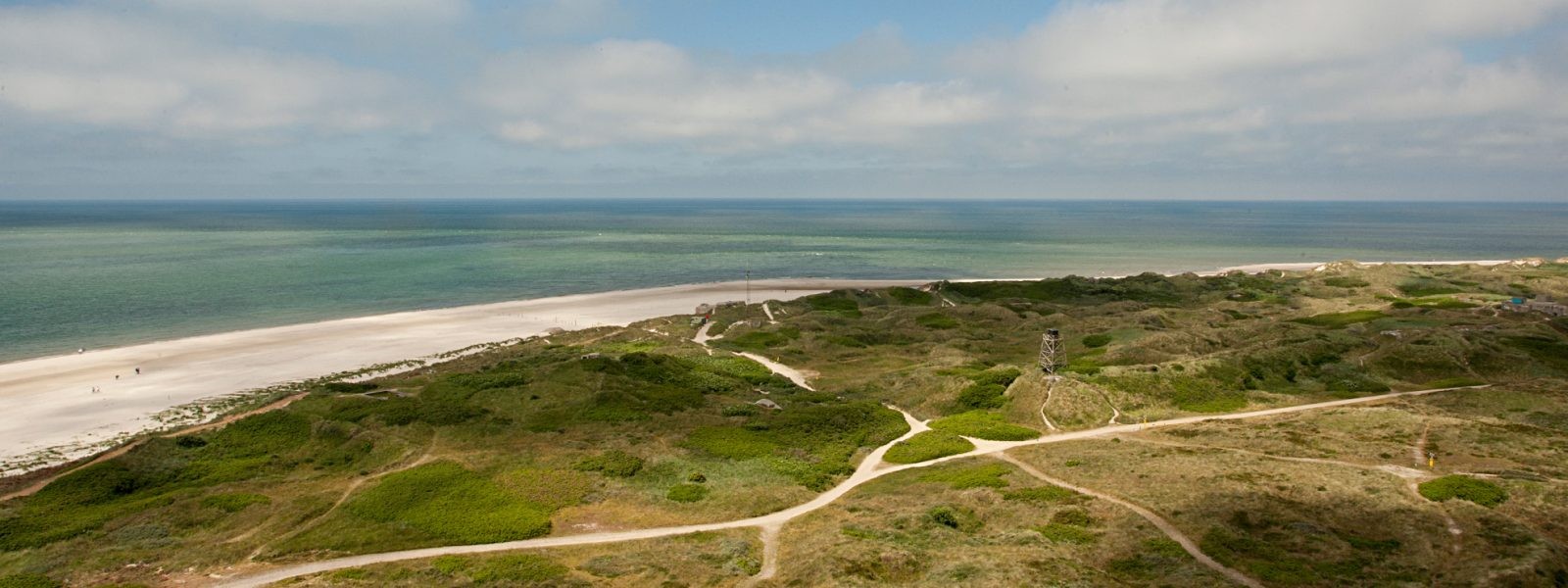Charger images
Les formats d'image autorisés sont de type jpeg, png ou gif
La taille maximale du fichier doit être de 20MB

Western-most point of Denmark with sandy beaches, dunes, seasonal wet hollows and heath. Good for migrating birds and a hotspot for rare migrants.
Year-round, the area is good for coastal birds and in the migratory seasons, there is a concentration of migrating birds over both sea and land.
In the winter, you can see great flocks of Macreuse noire and Macreuse brune, and it is a good place for Harelde boréale, Bécasseau sanderling and different species of gulls, including Goéland pontique and sometimes Goéland bourgmestre.
In the spring, ringing/banding of birds take place at the ringing center. during April and May, many passerines pass through, totalling around 2000 ringed birds every season. Seawatching is good from middle of April and you can observe great migration of Plongeon catmarin, wildfowls and terns and occasionally Labbe parasite, mixed with other arctic species.
The spring is quickly replaces with autumn, as the wader migration start in the end of June and peak at the end of July with great numbers of arctic waders. Especially on days with wind from south-east, the colorfull waders are numerous and the mixed flock just keep coming.
The general autumn from end of August is what local and national birds are waiting for every year. With the point reaching out in the North Sea and the long coast line to the north, Blåvandshuk becomes the center for all migration on the west-coast of Denmark. In good weather, thousands of passerines, geese, ducks and other coastal birds pass through. In windy conditions, the scene changes and focus is finding scarce seabirds, such as Océanite culblanc, Puffin fuligineux, Puffin des Anglais, Phalarope à bec large and Mouette de Sabine.
The Blåvand area one of the best places i Denmark to find rare birds. The list includes several new-to-the-country, e.g. Macreuse à ailes blanches, Pouillot du Caucase, Pouillot à deux barres, Pie-grièche schach and Bruant zizi. The area is known for regular Siberian passerines with severalPouillot à grands sourcils and yearly Pipit de Richard.
The is easy access to the area, using the highway and parking at the lighthouse (free parking). Looking to the east from the parking lot, you see the observatory and ringing station as a big, grey building. The station is manned from March to medio June and again from medio July to november - and you are always welcome to say hallo. If you ask nicely, the ringer might even take you on a tour. From the parking lot there is easy access to the best birds points. In the spring, the best place for watching migratory birds is from the high dunes between the parking lot and the beach. In the autumn, the best place is a little to the north, following the outermost dunes. The hot spot is located on a high dune just south of the military watch-tower.
Votre feedback sera transmis à l’auteur.rice de cette zone et à l’équipe éditoriale de Birdingplaces, qui l’utiliseront pour améliorer la qualité des informations. (Vous souhaitez publier un commentaire visible en bas de page ? Fermez cette fenêtre et choisissez l’Option 1 : « Publier un commentaire, un conseil ou une observation ».)
Veuillez fournir des suggestions d'améliorations ou d'ajouts au texte de ce site ornithologique.
Veuillez fournir vos suggestions d'améliorations ou d'ajouts à la carte.
Veuillez fournir des suggestions d'améliorations ou d'ajouts à la liste des oiseaux.
Cliquez sur l'icône de l'oiseau () Insérez les noms d'oiseau dans votre langue. Ils seront automatiquement traduits pour les autres usagers !